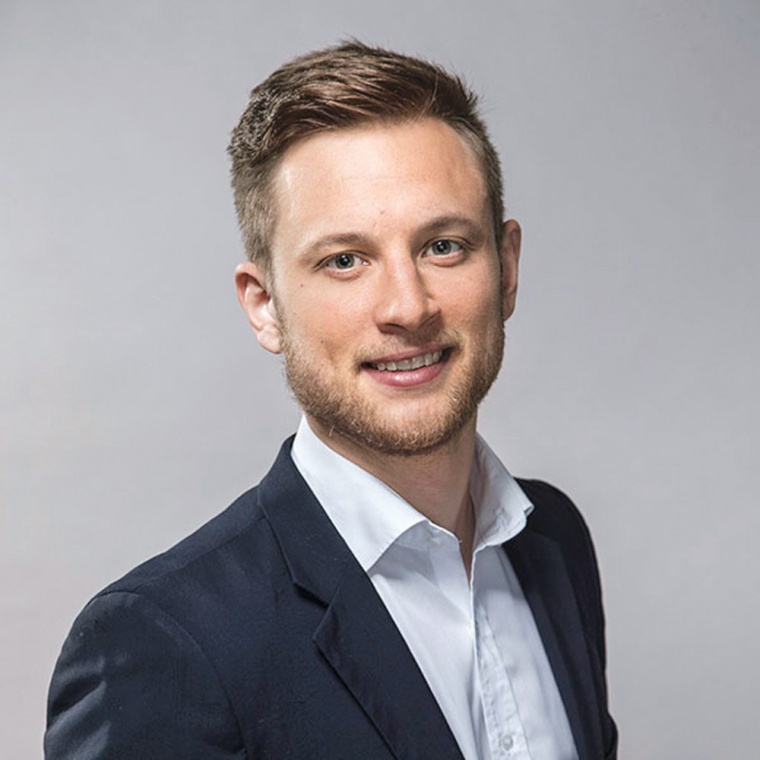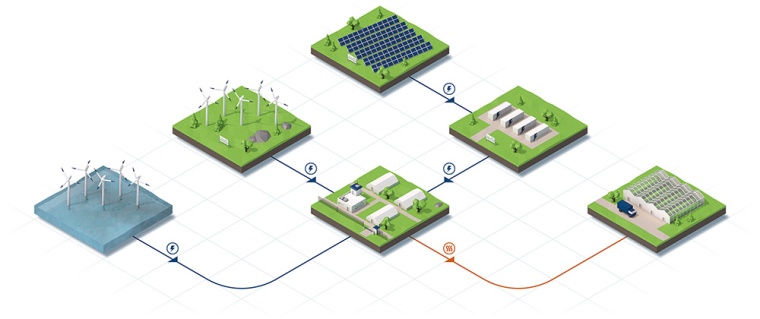13.12.2019 • Topstories
Windcloud Operates Data Centres and Cloud Computing as a Sustainable Model
Windcloud operates data centres and cloud computing as a sustainable model with green electricity from renewable energies. In the interview withGIT SECURITY, Managing Director Tho...

Thomas Reimers, Managing Director Windcloud 4.0

Windcloud refines heat energy with the help of other producing industrial concepts, which are located directly next door. For example, They can keep greenhouses at the right temperature all year round or gently dry harvested biomass from surrounding fiel
Windcloud operates data centres and cloud computing as a sustainable model – with green electricity from renewable energies. In the interview with GIT SECURITY, Managing Director Thomas Reimers explains how this all works.
GIT SECURITY: Mr. Reimers, your CO2-neutral and cost-efficient data centers, with which you also offer various cloud services, kill several trend birds with one technological stone. Could you first outline the basic idea of the whole thing?
Thomas Reimers: At Windcloud, the data center is the core of a larger, digital-energetic ecosystem. On the one hand, it constantly consumes large quantities of electricity, which is why we can buy 100 percent green electricity from local producers in the North Frisian region at very favourable conditions. Virtually, we use it to produce computing power, which is currently in demand in increasing quantities. Physically, this electricity is almost completely converted into heat. In contrast to other computer centres, where this waste heat usually goes up in the atmosphere, we refine this heat energy with the help of other producing industrial concepts, which are located directly next door. For example, we can keep greenhouses at the right temperature all year round or gently dry harvested biomass from surrounding fields. And all this in a very economical and sustainable way. This further added value earns money, which we refund to the data center operation and allocate to the kilowatt hours of electricity that were initially fed into the grid. The result is a serious cost advantage that we can pass on to our customers for the most part. Suddenly, we are more competitive because we work sustainably in cycles. I will then be able to sell organic products at a low price, and that will change everything.
The green energy comes from wind power and solar energy? Offshore wind turbines are also part of the system. What are the dimensions of this?
Thomas Reimers: In the North Frisia region and the west coast of Schleswig-Holstein, where we operate our sites, there are several gigawatts of green electricity available, primarily from wind and solar power, as well as many large storage facilities. This is the equivalent of several large coal-fired and nuclear power plants that can be replaced. We aim to operate over 12 megawatts of installed computing capacity in the course of 2020. By 2030, we want to have established an IT infrastructure with an equivalent capacity of 300 megawatts. The need for this is clear. And we can offer by far the most exciting overall package of security, price, holistic sustainability and maximum data protection.
You can buy wind power at low prices – what does this business model look like? Sustainability and competitive prices are obviously not a contradiction in terms?
Thomas Reimers: Technically speaking, it would be easy to use local green electricity directly. Unfortunately, the state and a very complicated, completely outdated legal situation put many hurdles in the way of implementing cost-effective direct use at the place of generating in an economical and low-risk manner. We are working with 16 specialists from the fields of renewable energies, energy law, energy trading and infrastructure planners on two promising concepts that guarantee us an apportionment-free use of electricity with 100 percent availability of supplies. Here we are making great progress. It has to be taken into account that the German electricity price consists of more than 70 percent apportionments such as the EEG apportionment, grid fees and electricity taxes and that only a small part is paid for the actual production of the energy. Since we do not use the grids, we and our customers should not pay these levies either.
The concepts already mentioned for the use of waste heat and other factors that are also used elsewhere contribute to sustainability?
Thomas Reimers: Sector coupling in general and waste heat utilisation in data centres have been big words for years. But actually doing it is not done by anyone on a serious scale. We have put many exciting concepts through their paces. Technically, almost anything is possible. Most approaches ultimately fail because of their economic viability. However, two approaches have made it into the final selection: With the data center waste heat, we now grow microalgae all year round in greenhouses, which are then sold to the food, cosmetics and pharmaceutical industries. In addition, we cultivate industrial hemp on outdoor areas with a partner network of regional farmers and then gently dry it with our data centre waste heat. A first drying plant of this kind will be completed in summer 2020. During biomass production and drying, a lot of CO2 is bound, which has a very positive and measurable effect on our CO2 footprint.
What does your safety concept look like?
Thomas Reimers: We can already offer the safety level of protection class 3. In addition, we are creating the infrastructural prerequisites to be able to implement protection classes 3+ and 4 in 2020. On the Green TEC Campus, our main location, we are building a multi-level security zone concept that leaves nothing to be desired in terms of access control and fire protection. We do not leave out any common measures of modern IT and network security. In addition, our sites are completely outside the so-called first strike area (nuclear war) and the earthquake probability is 0 percent. At the cyber security level, we also work with very experienced partners. In addition to our own resources, for example, we have entered into a strong partnership with A1 Digital, whose Security Operations Center (SOC) monitors and protects all data streams and accesses to our data centers in real time 24/7 and can ward off any attacks (e.g. DDoS) with the highest possible reliability.
Your data centers themselves are located on former military sites. What are the advantages?
Thomas Reimers: On former Bundeswehr properties, we find a very intact infrastructure in massive construction. The structural table was built here for eternity. We are now benefiting from this. It is also in the nature of things that these facilities – in which medium-range missiles and other highly sensitive goods were stored before our time – are very well shieldable from the outside world. It is easier to achieve a high level of physical safety than at other locations. This level of safety combined with uncompromising sustainability at an affordable price can only be achieved at a few locations in Germany or Europe.
Business Partner
Windcloud 4.0 GmbHLecker Str. 7
25917 Enge-Sande
Germany
most read

The Benefits of AI-based Video Surveillance Solutions for Sports Venues
Dallmeier Interview: Artificial intelligence Makes Stadiums Smarter


Security management, building security & perimeter protection: the winners of category E at the GIT SECURITY AWARD 2026
GIT SECURITY AWARD 2026: Security management, building security & perimeter protection - an overview of the most innovative solutions


Machine & plant safety: The winners of category A at the GIT SECURITY AWARD 2026
GIT SECURITY AWARD 2026: Machine & plant safety - an overview of the most innovative solutions









